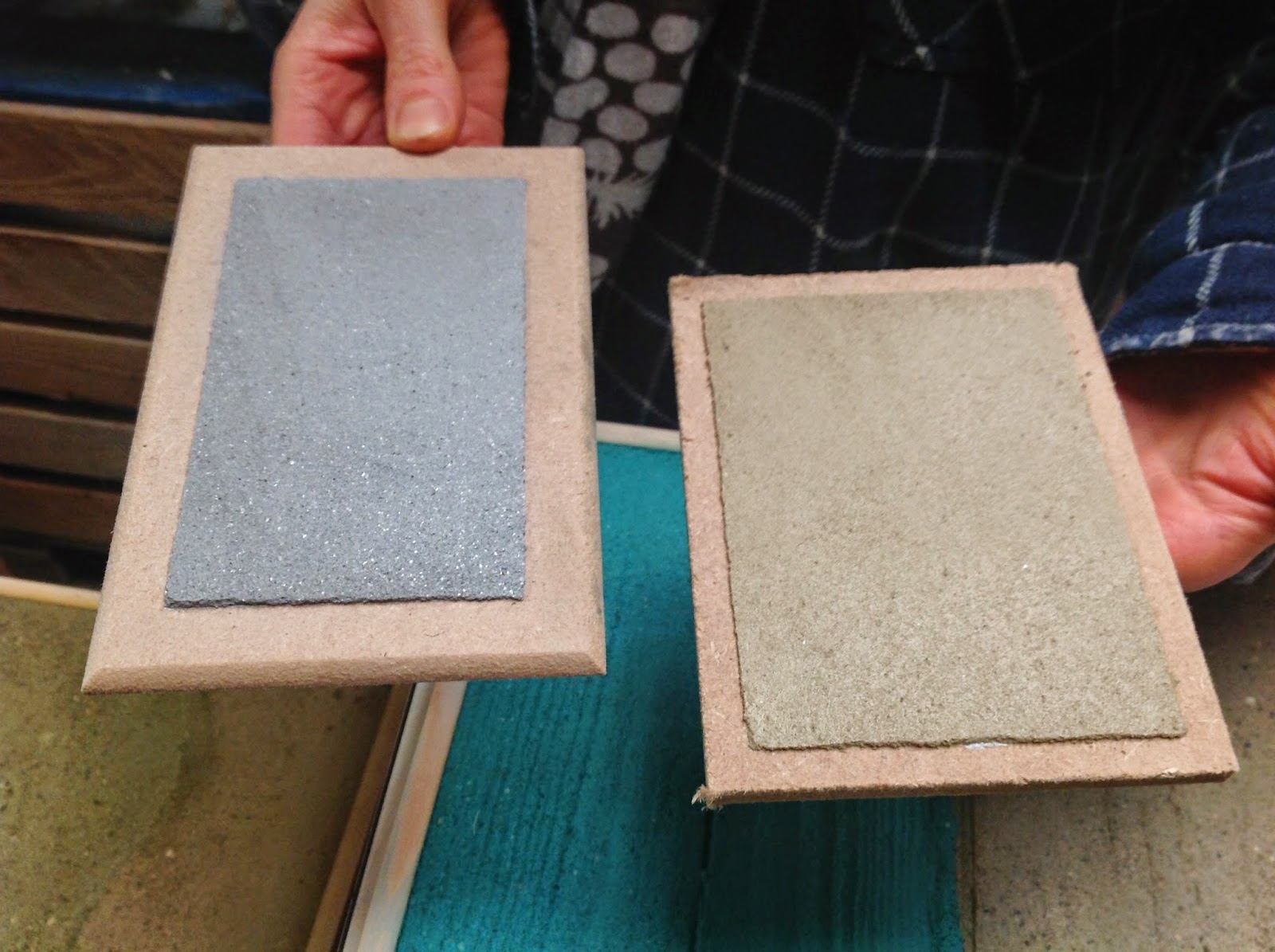Adam Weismann and
Katy Bryce – Clayworks
Date of Visit:
19th February 2014
Location:
Clayworks, St Keverne,
Helston, Cornwall, TR12 6PE
Contact
No.:
+44 (0)1326 341 339
email:
info@clay-works.com
website:
www.clay-works.com
other media:
www.facebook.com/naturalplasters
An overcast day on the outskirts of St Keverne on the
Lizard Peninsula sets the scene for a meeting with two very inspirational
people who are passionate about their work. Their journey into working
with clay has stemmed from a love of building with natural materials..
Adam and Katy carried out an apprenticeship in natural
building in Oregon USA, and then came to Cornwall to work on a restoration
project. They soon fell in love with the area and decided to make a home and
business.
Cob in Cornwall (http://www.cobincornwall.com)
was their local bench mark business, predominantly restoring old cob buildings,
and building new ones from wood, stone, straw and clay. There was repair
work, for example collapsing walls, and also new cob building projects.
The raw materials were locally sourced on site, and the clay is excellent in
Cornwall. Initially doing all the work by hand and feet is a lengthy and
labour intensive process that is dependent on the weather. For example
lime plastering in horizontal rain does not work, and cold conditions with cob
lengthen the drying time. Mass walling wet cob in the summer takes say 2
days to dry, however in the winter perhaps 10 days, and it is not workable near
or beyond freezing temperatures. Over the winter times internal work
could be undertaken, such as lime and clay plastering on building
projects.
As larger new build projects were being commissioned,
there developed a degree of pragmatism in accessing the on-site clay.
Time becomes more of a factor and a digger was used to remove the topsoil, and
obtain the clay. This was different to the initial days of turning up to
work with hand tools and pitch forks. This said, it is still difficult to
mechanise the working of cob, and not something they were wanting to do anyway.
This time spent working with both lime plastering and
cob enabled them to not only hone their skills and experience, but to publish
books on each, both well reviewed. 'Building with Cob. A step-by-step guide.' http://www.howtobuildwithcob.co.uk in
2006 and 'Using Natural Finishes. A step-by-step
guide.' http://www.usingnaturalfinishes.com in 2008.
Without precedent in Great Britain, the natural
evolution was for them to develop a merging of their skills and practice, which
would alleviate some on the seasonal dilemma and reduce some of the back
breaking labour. So they invented a range of standardised clay
plaster mixes and began their new chapter.
They now run Clayworks - where they manufacture and
supply their own unique blend of pigmented clay plasters. They also carry
out projects with their Clayworks clay plaster. They train up plasterers in the
use of their plasters, and hold courses once a month. This is called the Clay
Plaster Network (http://www.clay-works.com/blog/clay-plaster-training/)
and can then recommend these plasterers to their clients who buy their product.
Having worked extensively with cob buildings and lime
plastering, they have gone on to develop, test, produce, supply and educate in
this niche craft. Clay plastering is unsurprisingly gaining momentum
within the design industry, as well as being hailed as having one of the most
carbon neutral footprints amongst building materials. The clay can be
pigmented, and shaped to give spectacular 3D finishes, as well as having a long
working time compared to industry standard gypsum plastering.
Spectacular
beach sand dune style 3D effect.
The cost of Clayworks clay
plaster is more expensive than gypsum but you do not need to spend money or
labour time on painting, which evens out the cost. The preparation and
application needs to be learnt, and to this effect Adam and Katy run
educational practical courses. Contact katy@clay-works.com for details.
One of the moments that gives
them most satisfaction is for example when a client sends a very experienced
plasterer down to learn the techniques, and then 'something clicks' over the
practical session. The workability, process, satisfaction, use of
vernacular materials, feel and finish perhaps contribute to this 'eureka'-like
moment. Doesn't that make you want to learn or at least try out this
skill?
They have a colour range of 27
colours and also carry out custom colour matches for their clients. The
addition of mica can give a sparkle, and the clay dried finish has a lustre to
it. The application issues, as mentioned earlier, does depend (like
anything that bonds) on how the substrate is prepared. In particular they
mention joints or gaps for example, plaster board. What type of primer
underneath and whether scrim tape has been used. There is a system they
have developed and researched, and the process is continually evolving.
Left sample shows addition of
mica and sparkle effect on finish; Right shows sample without mica, there
remains a natural sheen or lustre.
They continue to work on at least 1 project a week,
aside from the efforts of running a growing business, attending various trade
shows nationally. Having clients internationally also means that they can
and need to travel with this work. There is a network of trained people
that they communicate with, accessed via their website (http://www.clay-works.com/blog/clay-plaster-training).
They are currently looking for a salesperson, so if you are reading this and
interested, please contact them!
One future inspiration for them is to visit the former
imperial capital city of Kyoto in Japan and work with one of the masters of
clay plastering, Naito San. Japanese tradition and tools, specifically
their trowels have a long history in clay plastering, as it is the traditional
internal finish of the tea houses.
Acknowledgements
Thanks to Paul Bright from Cornwall Sustainable
Building Trust for the contact with Adam Weismann and Katy Bryce at Clayworks,
and their time for enabling this visit.
Contact
seymourgreen14@gmail.com
Written in the UK, covered under British Media Law








No comments:
Post a Comment